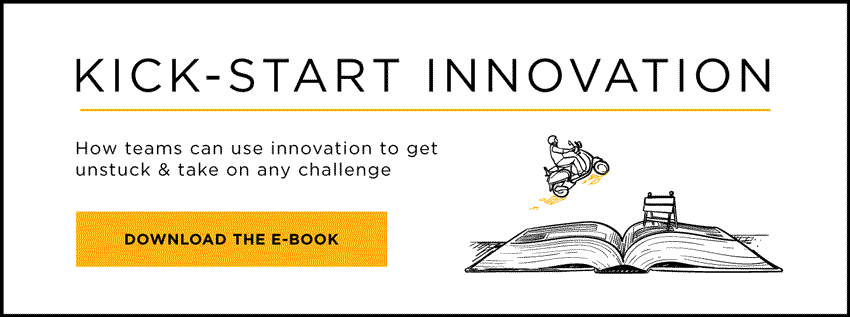How design thinking strategies could help financial services firms make their regulatory obstacles disappear
 In many industries, regulations are the price of doing business, and industry leaders dedicate a huge amount of time and money to addressing them. Financial services is no exception.
In many industries, regulations are the price of doing business, and industry leaders dedicate a huge amount of time and money to addressing them. Financial services is no exception.
Compliance practitioners say managing and coping with regulatory change is their biggest challenge today and it is only getting worse. According to Thomson Reuters, 58 percent expect to spend more time in the next 12 months liaising with regulators and another 16 percent anticipate significantly more contact.
A heightened regulatory environment isn’t likely to change, but firms can shift the way they address these rules through a design thinking approach.
I lead many design thinking workshops in the financial services sector and one of the biggest barriers I face is industry professionals who say design thinking can’t work in a highly regulated environment because regulators will say no to new ideas.
I wanted to dig a little deeper into this engrained mentality, so I asked several senior executives from a global financial services firm why they thought regulators stood in the way of innovation. At first they gave me the party line — with so many restriction they have no room to be innovative. And even if they were to try, everything needs to be approved by the business and the regulators, so there is no room to try new ideas.
Then I asked them why they think regulators exist, and again most of them parroted rules about consistency, fairness, and reliability. However one executive surprised me. “Regulators exist because we can’t be trusted,” he said.
I completely agreed with his assessment, but I was shocked that he was willing to put it into words. He was right. Regulators exist to protect the safety and well-being of the customer because financial institutions have proven time and again that they need someone to keep them in check.
This is exactly why design thinking is a perfect fit for the financial services industry.
Design thinking is built around the premise that if you make pleasing customers your primary goal and put their needs and feedback at the center of every decision, profits will follow. Happy customers are loyal and loyal customers buy more products because they trust you to meet their needs. That’s how businesses achieve sustainable success.
If financial services followed the rules of design thinking it would deliver the added benefits of rendering regulators redundant. Regulators are gatekeepers whose primary job is to make sure financial institutions meet the needs of customers and shareholders alike. If financial organizations have the same goal, then the regulator transforms from adversary to ally, whose sole job is to verify that everyone is on the same page.
Getting Wall Street On Board
Of course transforming a financial services organization to a design thinking culture can be a monumental exercise. These organizations are known for making business results their top – and often only – priority. They know what’s best for the bottom line and they develop solutions to feed that bottom-line until regulators step in and say ‘no.’
Shifting that culture to put customer needs at the center of every decision -- and having faith that relentlessly pleasing customers will deliver better bottom-line results -- requires innovative leaders who are willing to take risks, and who have the charisma to convince employees, stakeholder and Wall Street that this customer-centric approach will pay off.
Finance industry leaders interested in adopting design thinking strategies, can start by trying the following:
-
Focus on defining any challenge in terms of the user (customer or shareholder) and not on what will serve the business first. By doing so, you all but ensure regulatory support for any potential solution your team may come up with!
-
Conduct more robust ethnographic user research. Don't rely exclusively on data from surveys and customer purchasing patterns. Invest time in understanding your clients' true opinions and behaviors by observing them where they live and work. This will allow you to identify real problems you can solve and work-arounds that you can help correct!
-
Don’t fall in love with your first idea. Instead maintain your love affair with the problem. Developing multiple possible solutions and experimenting with them increases the odds of developing something truly innovative positioning you and your firm as market leaders that now everyone else will have to catch up with!
Regulators will never actually go away, and meeting their rules will continue to eat a significant portion of financial institution’s resources. But if financial institutions were willing to give design thinking a chance, they would see the regulator relationship become far less costly and contentious. The time and money they saved could be dedicated to supporting more innovative, customer centric projects, generating new value for the business and customers alike.
Learn how to enable innovation skill-building at scale here or download our free ebook Kickstart Innovation: A Guide for Organizations.
Keith LaPlante is a Master Facilitator at ExperiencePoint. Keith leverages 22 years of experience in financial services along with a decade of service in the Royal Canadian Navy to design and deliver working models, design sprints, change interventions and training programs to develop and apply user-centric problem solving approaches and solutions. Keith has worked with global organizations including JP Morgan, Microsoft, Citigroup, Coca-Cola, Visa, Standard & Poors, AAA and The Ford Motor Company. He has also taught executives at leading universities, including Harvard Business School, University of North Carolina and Duke University.
